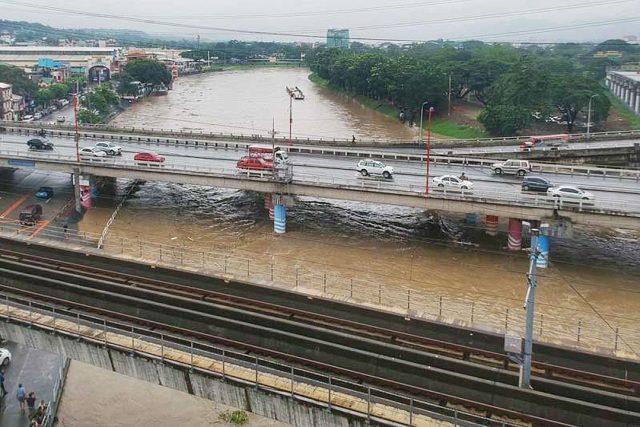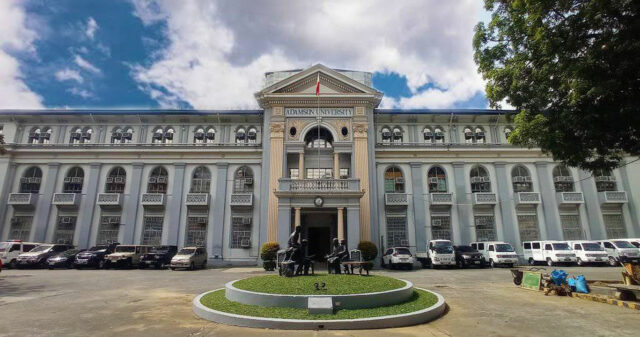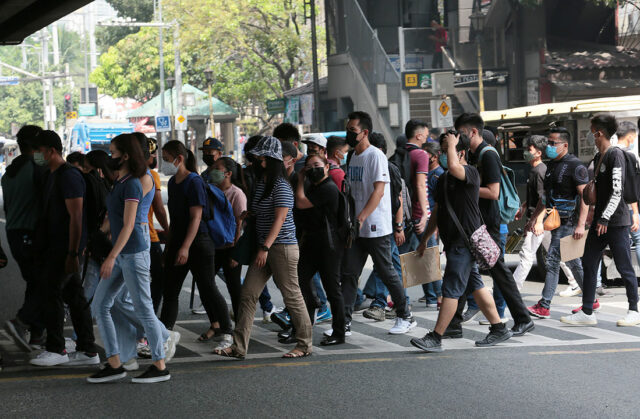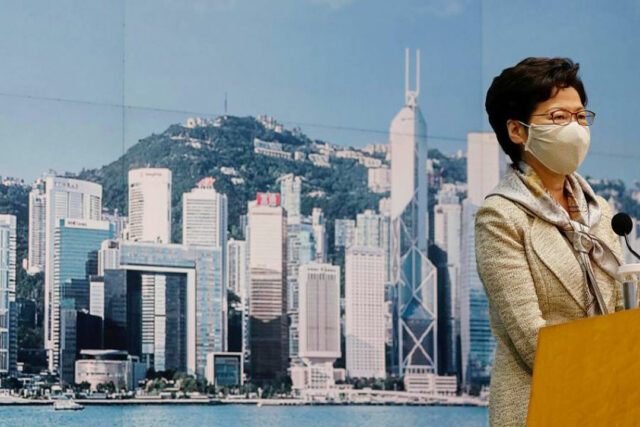The judiciary started on Monday its four-day workweek schedule for thousands of court employees in Metro Manila. The new work arrangement, which was prompted by rising fuel and energy prices, covers the Supreme Court (SC), Court of Appeals, Sandiganbayan, and Court of Tax Appeals. The National Economic and Development Authority (NEDA) earlier proposed the shorter workweek for energy conservation.
One group of court employees is scheduled to report onsite 7 a.m.-5:30 p.m. Monday-Thursday, while another second group is to work at the same time slot, but Tuesday-Friday. This way, judicial service will not be compromised. While the workweek is only four days, court operations still remain at five days weekly.
Chief Justice Alexander G. Gesmundo was quoted in a news report that the shorter workweek took into consideration “the adverse effect created by the series of oil price increases….” He also said the SC Employees Association, in a letter dated March 21, actually requested the new work schedule. Judicial workers not covered by the new arrangement will continue to report for work onsite Monday-Friday, 8 a.m. to 4:30 p.m.
The thing is, despite the shorter workweek, people are still made to work the same number of hours they log during a regular workweek. Convention, regulation, and law put those hours at 40-44 weekly: eight hours daily for five days, or 10 hours daily for four days. Many also put in a half-day’s work on Saturdays. And this is where the problem lies, I believe.
In a column late last year, I recall citing a report on Iceland and how their government offices actually benefitted from a shorter workweek; how productivity rose enough to ensure that all services were still provided as needed; and, as a consequence of the study, why 86% of Icelanders would eventually have the right to a shorter workweek of four days.
It was online publication Big Think that reported on a new study in Iceland which documented “the recent success of one of the largest experiments to date on a reduced workweek.” Carried out by the Icelandic government and published by Autonomy, a UK think tank, the report suggests that a substantial portion of the economy could switch over to a short workweek with little in the way of negative effects, Big Think said.
Big Think reported that two experiments were done. The first, from 2014 to 2019, was by Reykjavík’s city government, and involved more than 2,500 workers at playschools, city maintenance facilities, care-homes for people with various disabilities and special-needs, and beyond. The second, by the Icelandic national government from 2017 to 2021, involved 17 workplaces across the country.
But the big difference between their experiment and the Philippine experience is that “workers in the experimental locations [in Iceland] saw their hours reduced from 40 to 36 or 35 hours per week with no loss in pay. The exact way these hours were organized was determined by the individual workplace involved. Many opted to split the hours among four days, while others worked a five-day week with one workday being shorter,” Big Think reported.
The overall goal, in fact, is not just to cut the number of work days in the week, but also the hours. To give workers more time outside the office or workplace, and spend this time either with family or leisure. Work-life balance and workers’ health were the main considerations, and how promoting these actually lead to higher productivity.
“Both studies produced similar results. The reduction in hours caused either no change or an increase in productivity and improvements in the reported work-life balance of employees. While many employees were concerned that more work would be crammed into less time, the data show that the workers were actually working less,” Big Think reported.
It also noted that “improvements in efficiency were found in every workplace. Employees worked faster. Time-wasting events, like unnecessary meetings, were curtailed. Routines were changed to be more efficient, and shifts and schedules were restructured. Overtime was needed in some offices, but only sparingly. Importantly, services were provided at the same levels as they were before the reduction in work hours. The well-being of workers dramatically improved, with many reporting increased time with their families, lower stress levels, and a better ability to balance their work and home lives.”
And, as a result of the two trials, Big Think noted that 86% of Icelandic workers were now on contracts that either reduce their workweek or grant them the right to reduce their workweek in the future. In general, it is safe to assume that the shorter workweek forces everyone to be more efficient and more conscious of time.
Fewer days but more work is the main argument locally against a shorter workweek. No work-no pay arrangements also lead to lower income for many day workers. And this is where the local system must change. Fewer days, fewer hours, but better pay can work, if remuneration is based on output, productivity, and efficiency, and not just on the number of days or hours worked.
This, of course, is easier said than done. But Iceland is already showing the way. There are plenty of lessons from its twin experiments. However, there will be growing pains, like with any system change. There will be plenty of unexpected consequences from shortening the workweek, and as people adjust to it, even more changes will occur inside and outside the workplace.
But now is the time to push for a shorter workweek, as well as the wider use of work-from-home arrangements. Already, 30 companies in the United Kingdom are taking part in a six-month trial to test a four-day workweek: fewer work days with no decrease in pay. The trial also involves researchers at Cambridge University, Oxford University, Boston College, and the think tank Autonomy.
But, other than the Iceland experiment as well as the UK trial, labor history has lessons to share as well. As noted by the Financial Times’ Sarah O’Connor in a report on March 25, “in Britain in the 1840s, a campaign to reduce the length of the working day in factories from 12 hours to 10 prompted predictions of disaster. One parliamentarian called the idea ‘dangerous’… But in 1846, parliament heard the results of an experiment run by an owner of large mills in Manchester and Preston. When he reduced the working day to 11 hours, he found production volumes remained the same and the quality of work improved.”
She also wrote, “Similarly, when Henry Ford reduced the working week in his car factories from six days to five with no cut in pay in 1926, the decision followed several years of experiments, which had assured him production would not suffer. ‘We can get at least as great production in five days as we can in six, and we shall probably get a greater, for the pressure will bring better methods,’ he said.”
That was in 1926, almost a century ago. Henry Ford, among others, already proved that shortening the workweek would not result in catastrophe. But employers need to keep an open mind, and the willingness to discover what Ford referred to as “better methods” of production.
Marvin Tort is a former managing editor of BusinessWorld, and a former chairman of the Philippine Press Council
matort@yahoo.com












